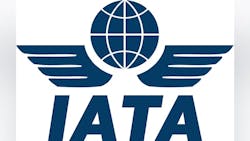IATA Outlines Top Safety Priorities for Global Aviation at World Safety and Operations Conference
The International Air Transport Association (IATA) opened its 2025 World Safety and Operations Conference (WSOC) in Xiamen, China, emphasizing three critical priorities to strengthen aviation safety and operational resilience: defending and advancing global standards, fostering a strong safety culture through leadership, and using data to enhance performance.
“The environment in which airlines operate has grown even more complex as conflicts and regulatory fragmentation have proliferated,” said Mark Searle, IATA’s Global Director of Safety. “We’ve seen airspace closures, drone incursions, and rising global navigation satellite system (GNSS) interference disrupt connectivity, undermine confidence, and threaten safety.
"Ensuring aviation remains the safest mode of transport requires strong leadership, robust adherence to global standards, and smarter use of data. By focusing on these - industry and government together - we will build a safer, more resilient, and increasingly efficient global aviation system prepared for tomorrow’s risks.”
Defending and advancing global standards
IATA underscored that adherence to established global standards and continued development of new ones are vital to aviation safety. Current efforts are focused on:
-
Addressing GNSS Interference:
Reports of GNSS interference have surged more than 200% between 2021 and 2024. Together with EASA, IATA has launched a GNSS Resilience Plan built around monitoring and reporting, prevention tools, backup infrastructure, and civil–military coordination. IATA is calling on ICAO to advance these efforts through global standards and guidance. -
Protecting Aviation’s Radio Spectrum:
The rapid expansion of 5G and 6G networks continues to pressure aviation’s protected spectrum. In several markets, including Australia, Canada and the United States, 5G rollouts have created interference risks near airports, forcing costly equipment retrofits. IATA urged stronger coordination with telecom regulators, realistic mitigation timelines, and the development of more resilient onboard systems. -
Improving Accident Investigation Reporting:
Only 58% of accidents between 2019 and 2023 have produced final investigation reports, according to Annex 13 of the Chicago Convention. IATA continues to push governments to meet their obligations and commended recent examples of prompt preliminary reports in India, South Korea, and the United States.
Using data to enhance performance
IATA highlighted how data-driven insights are transforming aviation safety and efficiency through its Global Aviation Data Management (GADM) program, which integrates flight, incident, and maintenance data across the industry.
-
Turbulence Aware:
Participation in IATA’s Turbulence Aware platform grew 25% in the past year, with 3,200 aircraft—including those from Air France, Etihad, and SAS—now sharing real-time turbulence data to improve flight safety and efficiency. -
Predictive Safety Insights:
IATA’s SafetyIS database draws on operational data from 217 airlines, enabling predictive analysis. For instance, an early spike in collision-avoidance alerts at a Latin American airport was identified and mitigated before an incident occurred. -
Risk-Based IOSA:
The risk-based IOSA audit model has already produced more than 8,000 corrective actions, strengthening safety management through data-tailored audits aligned to each airline’s operational profile.
Fostering a strong safety culture through leadership
IATA also stressed the role of leadership in maintaining a strong safety culture, one where employees can raise concerns and expect swift, effective resolution.
-
The IATA Safety Leadership Charter, covering 90% of global traffic, promotes eight core principles of safety leadership and reinforces a shared commitment to standards, transparency, and accountability.
-
IATA Connect, the organization’s collaborative safety platform, links 5,600 users across 600 organizations and provides access to key IOSA documentation, the Safety Issue Hub, and Safety Connect. Expansion to include ISAGO users is planned.
